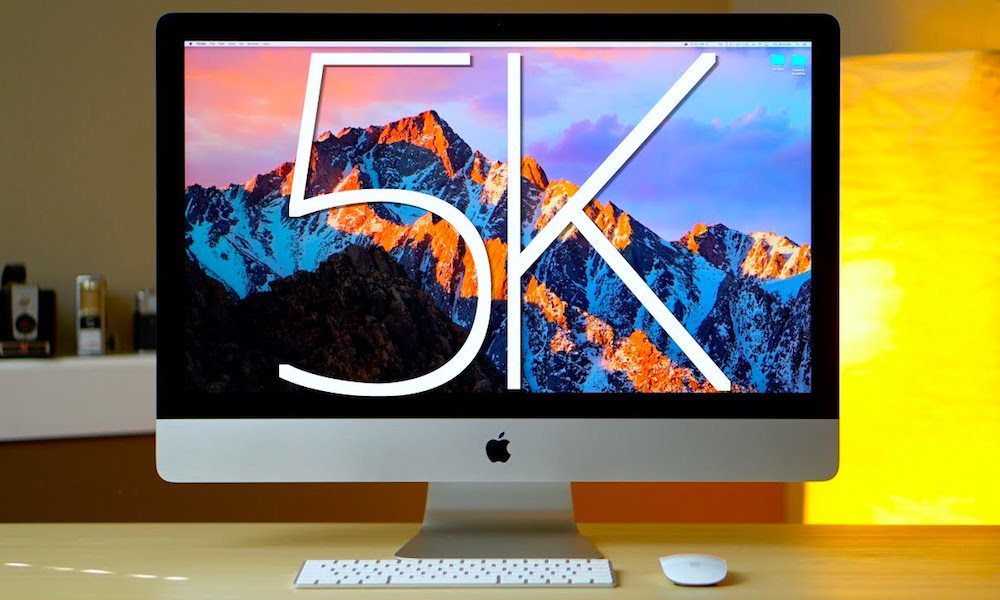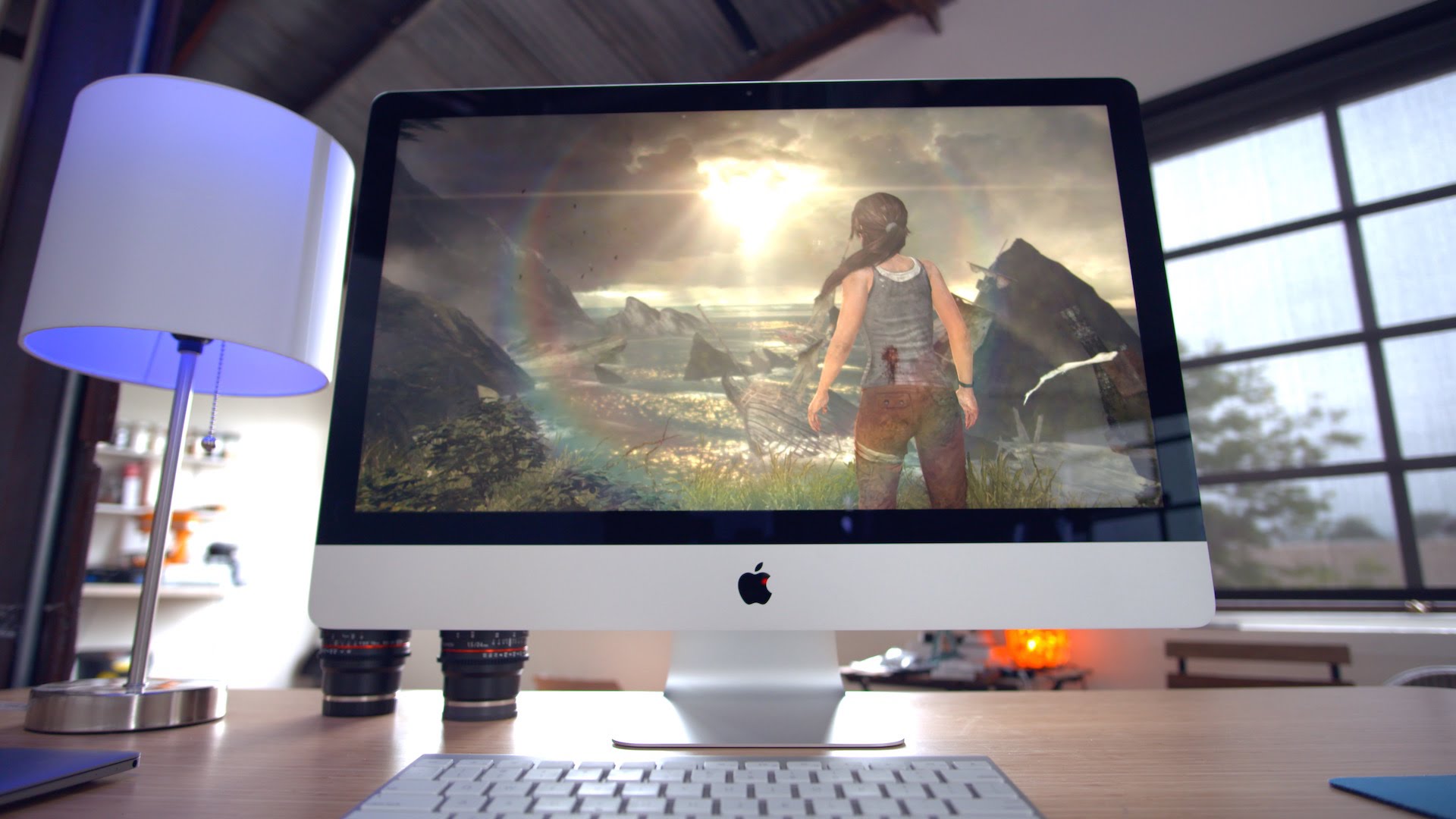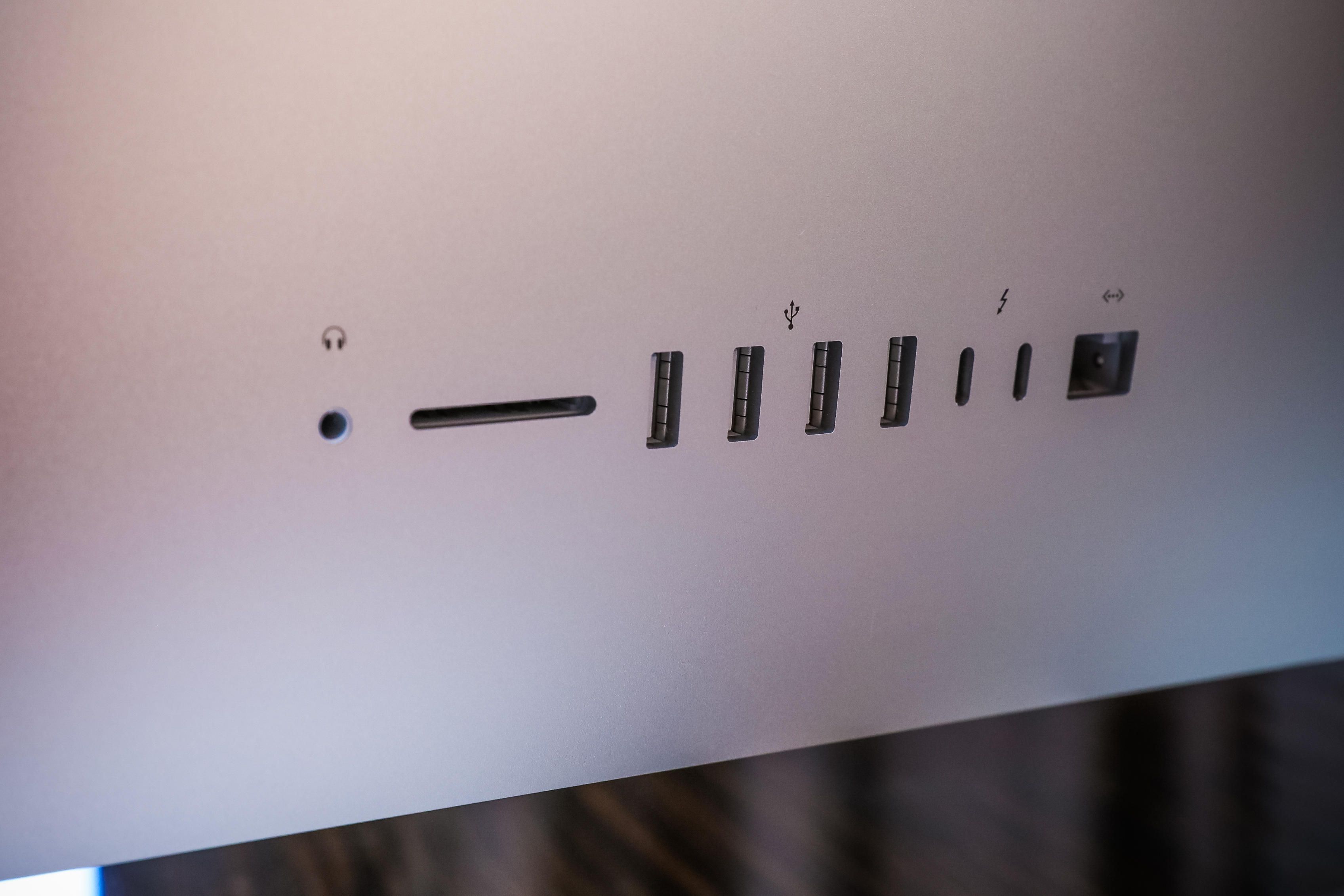3 Reasons You’ll Love Apple’s Mid-2017 5K iMac

Images via AppleInsider, CNET
Toggle Dark Mode
During its keynote speech at last month’s WWDC event, Apple showcased a bounty of products including the HomePod Siri-speaker, new iPad Pro models, refreshed iMac computers and more. Of course, while the upcoming iMac Pro flagship is poised to be a powerhouse desktop unlike any Apple has ever released, for the first time in almost two years, Apple also released a duo of refreshed iMac computers. Luckily, iDrop News was given the opportunity to spend some time with the mid-2017 5K iMac and while, on the surface, it’s clear that not a whole lot has changed from the previous generation 5K iMac, Apple has nevertheless packed a ton of noteworthy new features and advancements into its latest offering. Having spent the last few weeks using the machine, we decided to compile a brief analysis of three key reasons why the latest and greatest 5K iMac is the company’s best mainstream desktop yet.
Style, Design, and Display

Back in late-2015, Apple dramatically redesigned the iMac to bring it more in line with the company’s range of MacBook Pro offerings. And the mid-2017 iMac borrows most of the same design elements of its predecessor, including its ultra-sleek and slim form factor that measures just 5mm thick (at its thinnest point around the side bezels), a tapered rear casing that houses the machine’s internal components, and a variety of connectivity ports to service all of your favorite accessories and peripherals.
Unsurprisingly, Apple has employed the same aluminum, all-in-one unibody design as the late-2015 iMac, too, which features roughly 1-inch thick black bezels surrounding the perimeter of the 27-inch display, and a bottom-mounted speaker system boasting integrated microphones. Sadly, while recent iPhones and iPads have significantly beefed-up on the camera hardware, the iMac’s built-in FaceTime camera (located at the top of the display) remains a measly 720p iSight module. The system’s unibody chassis is connected to the arched aluminum foot base, which features a precision hinge that provides fluid tilting of the display to accommodate different viewing angles when placed on a desk. Alternatively, you can always remove the foot base and mount the chassis on a wall using an
The system’s unibody chassis is connected to the arched aluminum foot base, which features a precision hinge that provides fluid tilting of the display to accommodate different viewing angles when placed on a desk. Alternatively, you can always remove the foot base and mount the chassis on a wall using an Apple-certified VESA mounting system if you’d prefer.
The finish and durability of the machine is truly second-to-none and boasts the same, high-quality matte-silver aluminum design as its predecessor, bundled in a palpably tough, precision-crafted shell just like Apple’s recent MacBook Pro models. Of course, the machine’s signature feature is its absolutely gorgeous 27-inch display, which now comes standard featuring Apple’s next-generation P3 Wide-Color technology and boasts a native, eye-popping resolution of 5120 x 2880 pixels. Apple touts that the mid-2017 iMac’s display is 43% brighter than the
Apple touts that the mid-2017 iMac’s display is 43% brighter than the previous generation’s, as well, at 500 nits. The display is absolutely gorgeous at any brightness and features an anti-reflective coating for maximum visibility, as well as NightShift functionality for easy viewing after-dark.
Speed

One of the most noteworthy changes in the mid-2017 iMac is its inclusion of Intel’s latest 7th generation Kaby Lake processor, which on our base-model test unit boasts a quad-core i5 configuration clocked at 3.4 GHz. Not surprisingly, the updated CPU provides a fairly solid speed bump over Intel’s previous generation, 3.2 GHz quad-core Skylake processor — even despite its marginally higher clock-speed. One caveat is that the Kaby Lake CPUs utilizes the same 6 MB of L3 cache as the previous-generation 5K iMac; however, worth noting is that the new CPUs have been optimized to take full advantage of hardware acceleration features coming later on this fall with the release of macOS High Sierra — so performance will only get better in time.
One caveat is that the Kaby Lake CPUs utilizes the same 6 MB of L3 cache as the previous-generation 5K iMac; however, worth noting is that the new CPUs have been optimized to take full advantage of hardware acceleration features coming later on this fall with the release of macOS High Sierra — so performance will only get better in time.
Overall, the system is still incredibly powerful, and even though we tested the base-model configuration, it still handled demanding tasks like running multiple applications simultaneously with ease — and it even boots up in roughly 15 seconds, according to our testing.
Meanwhile, Geekbench testing for single core performance revealed that the mid-2017 iMac clocked at 3.4 GHz scored 4737, in comparison to the previous generation’s score of 4369 — a gain of about 8%. Similarly, in multi-core testing, the same models achieved scores of 13826 and 12098, respectively — or a rough gain of about 9%. Unfortunately, we didn’t have a previous-generation iMac on hand to compare or contrast real-world speeds; however, while the CPU advancements in the mid-2017 iMac might seem negligible on paper, in real-world performance they’re actually quite significant. And the reason for that is partially because Apple has upped the ante this time around by equipping its base-model 5K iMac with a whopping 4 GB of dedicated graphics, powered by AMD’s latest Radeon Pro 570 GPU. In comparison, the late-2015 5K iMac boasted just 2 GB of dedicated graphics, courtesy of AMD’s Radeon R9 M380x.
Connectivity Options Galore

As expected, Apple has also upped the ante with its connectivity options on the mid-2017 iMac, bringing them in line with its recent MacBook Pro offerings, while providing more ports for all your connected-gadgets. On the rear of the machine, you’ll enjoy a single 3.5mm audio jack, a standard SDXC card slot, a total of four USB 3.0 ports, two Thunderbolt 3 ports (an upgrade from Thunderbolt 2), which also double as USB Type-C connections, and a standard Ethernet jack. Additionally, right below the power connector, you’ll find a small Kensington lock slot which can be used to physically secure the machine to a wall mount. Directly above the power connector, you’ll find an aerated grill that houses the machine’s built-in cooling fan.
Additionally, below the power connector, you’ll find a small Kensington lock slot which can be used to physically secure the machine to a wall mount. Directly above the power connector, you’ll find an aerated grill that houses the machine’s built-in cooling fan.
Configurations
As previously mentioned, we tested the base-model configuration, which is the most economical offering on tap, and comes equipped with a 3.4-GHz Intel Core i5 processor, 8GB of RAM, a 1 TB Fusion Drive and an AMD Radeon Pro 570 graphics card with 4GB of video memory — all for just $1,699. While we believe the base-model would sufficiently serve the needs of everyday users, Apple of course offers multiple higher-tier configurations ranging in price from $1,999 to over $5,299 for an absolutely insane, top-of-the-line model boasting an Intel Core i7-7700K processor, 64 GB of RAM, and 2 TB of SSD storage.
Included in the box, you’ll also receive a wireless Magic Keyboard 2 and Magic Mouse 2, as well as a standard 3-foot Lightning to USB cable to charge them.
Conclusion
Apple’s mid-2017 5K iMac is a true powerhouse, offering a myriad of advancements like impressive speed, ample storage, and an abundance of graphics prowess to satisfy even the most demanding users — and it’s all bundled up in an ultra-thin, sleek and sexy package that fits comfortably on a compact desk. Of course, depending on your personal and/or professional needs, you might find it a worthy investment to upgrade the system’s RAM, CPU speed, SSD storage, or graphics memory allowance — and you’ll surely be able to do that by configuring a build-to-order model on Apple’s website. However, for the cost-conscious among us who’ve been dreaming of a powerful iMac that provides best-in-class performance, aluminum-clad durability, and features that are sure to withstand the test of time, even the base-model iMac at $1,699 is sure to serve and exceed your needs for years to come.






